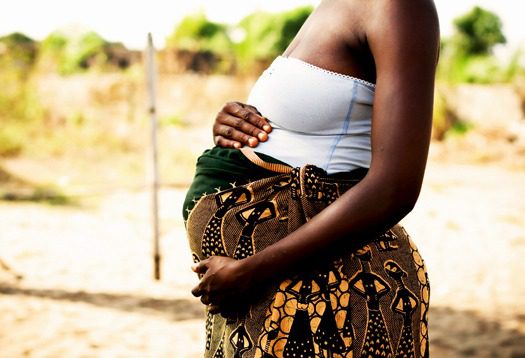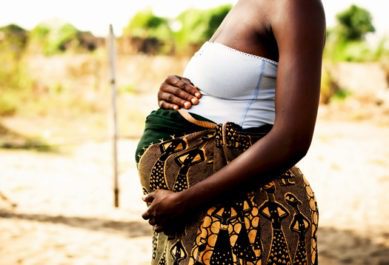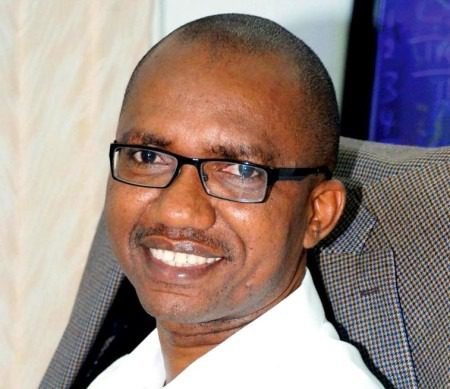Democracy & Governance
A silent revolution against maternal deaths -By Omorodion Eraruyi

Not many Nigerians would easily forget that turbulent New Year’s Day of 2012. In what was adjudged by Nigerians as an unwanted New Year gift, the federal government announced the removal of fuel subsidy. As expected, angry reactions soon turned into street protests that convulsed the country for over a week. The traditional trust deficit between the government and the people meant clear and transparent decisions had to be made with respect to what to do with the proceeds of subsidy.
The whole conversation around the provision of safety nets implied that monies saved from subsidy removal had to be channelled towards programmes that would impact the lives of poor and vulnerable Nigerians, who never really benefitted from fuel subsidies in the first place. While the states, with less scrutiny from the media, could run whatever programmes they deemed fit with their subsidy monies, the federal government made it a point of duty to ensure funds from the removal of subsidy were pooled to address some of the most pressing issues relating to Nigeria’s human development index.
The government therefore made a decision to channel its own share of the subsidy into a combination of programmes to stimulate the economy and alleviate poverty through the provision of critical infrastructure and social safety net projects. This was the basis of setting up the Subsidy Reinvestment and Empowerment Programme (SURE-P). The FG receives 41 per cent of the total savings from the partial reduction of subsidies on petroleum products.
SURE-P has two broad intervention categories: Infrastructure Development Projects (roads and railways developments) and Social Safety Net Programmes (community services and empowerment, maternal child health (MCH), mass transit, public works (FERMA), vocational training, and culture and tourism.
One of the issues that had to be confronted was the huge problem of maternal mortality, which had given Nigeria the unwanted image of a place where too many mothers lost their lives in the throes of childbirth. The statistics were mind boggling; figures released in 2013 put Nigeria’s maternal mortality ratio at 576 deaths per 100,000 births, one of the worst in the world.
To reverse the situation, and ensure the country sheds its toga as a country that confers death sentences on its pregnant women, the Maternal and Child Health project was instituted. The MCH component was essentially conceived for the reduction of maternal and new born morbidity and mortality, which has provided a unique opportunity to focus on increasing access to maternal and child health services through the continuum of care for pregnant women and their newborn.
Designed to run for four years (2012–2015), the project has nationwide coverage and concentrates on rural and under-served communities. One of the objectives is to increase the availability of skilled health workers to provide maternal and child health services at the Primary Health Centres (PHC) level.
It has also pushed for the provision of visible infrastructural renovations to primary health care centres, while increasing the supply of essential service commodities at PHC facilities to improve service delivery. The MCH has also explored the possibility of increasing the demand for MCH services in rural communities through the use of Conditional Cash Transfer (CCT) and community engagement at the grassroots.
The “supply side” within the context of the project has had to do with increasing and improving both infrastructure and human resources to improve health service delivery at the primary health care level. Specifically, this component has seen the refurbishment of PHC infrastructure, scale-up of number of trained health workers – midwives, community health extension workers (CHEWs) and village health workers (VHWs). This is with the aim of guaranteeing adequate antenatal attendance, skilled delivery at birth, routine immunisation and postnatal care for women and their babies.
The “demand side” component has explored ways to increase the utilisation of maternal and child health services in the primary healthcare facilities through the use of incentives such as the conditional cash transfer (CCT) after the fulfilment of prescribed co-responsibilities.
Systematically, the intervention has raised support for a selection of 1,000 primary health care centres in all 36 states, as well as the FCT Abuja, providing free antenatal care, skilled birth attendance, postnatal care, immunisation and family planning counselling.
However, one of the important responsibilities of SURE-P MCH is to build the capacity of existing health workers at the primary health care level, which has been vigorously pursued through the training of midwives and Community Health Extension Workers (CHEWs). All CHEWs are being taught how to handle “normal” deliveries when necessary. For instance, if a CHEW meets an expectant mother at home and the baby’s head is already visible, he will be able to handle the delivery. Afterwards, the mother and child are taken to the health centre. In addition, CHEWs go on to train village health workers (VHWs), passing on the key knowledge.
Knowing the literacy challenge in the rural areas, the mode of knowledge transfer is done pictorially in addition to instruction in four languages: English, Hausa, Igbo and Yoruba.
In terms of concrete achievements, the shoring up of human capacity in the health sector is one area in which the project has recorded resounding success. As at August 2014, the SURE-P MCH has created jobs by recruiting 11,912 workers. These healthcare workers comprise: 2,811 midwives; 3,133 community health extension workers (CHEWs); and 5,966 female village health workers (VHWs) cut across the six geo-political zones of the country. Also, around 3,000 midwives and CHEWs have been trained on Life Saving Skills and helping babies breathe. Similarly, a total of 3,072 VHWs have received an induction course on key household practices in December 2012 and April 2013. A further 3,000 were trained in 2014.

















